Chapter 2, Part 9
The narrow road keeps going up, climbing the slopes of Mount Lawu, an active volcano rising more than 3,000 meters on the island of Java. We are more than 30 km away east of Solo, the city from which we departed earlier in the morning, and the rather grim-looking highway with disorderly stalls and billboards on both sides of the road has now been substituted by a sweeping view of villages and verdant fields.
Further 10 km away, on the northwestern slopes of the slumbering volcano, lies a testament to a period in Indonesian history when the once-powerful Hinduism had been gradually replaced by Islam as the dominant religion in Java. Built in the 15th century when most coastal areas of the island had been converted to Islam, Candi Cetho (also spelled Ceto) not only looks very different from other Javanese ancient temples, but also lacks the finesse of its predecessors.
A theory suggests that while remaining Hindu communities on the island fled to the highlands or the forests, the royals and their finest sculptors sought refuge to the island of Bali, separated from Java only by a narrow strait. The growing Islamic sultanates, where their subjects practiced a largely different form of Islam than in the Middle East, seemed to care less about Java’s last Hindu communities and allowed them to continue practicing their faith despite having to resort to unfavorable places.
Forgotten and neglected for centuries, Candi Cetho was rediscovered by a Dutchman in the mid-19th century. Several studies were conducted in the decades that followed. However in the late 1970s a thorough but haphazard reconstruction work was carried on by a close aide of Suharto, Indonesia’s dictator for 32 years. Some parts of the temple’s current structure are conjectural, although the sculptures and statues are mostly original, including an oversized phallus sitting right in the middle of the temple compound.
Fortunately the layout of the reconstructed temple is still true to the original, taking the shape of terraces which is often associated with the pre-Hindu megalithic culture and architecture. Indeed, it is believed that when a society is under pressure from a new religion, people often look back to their roots, usually to the culture and religion that predate their own. Before the introduction of Hinduism to the people of Java, animism was the predominant belief of the people and places of worship were built as contiguous terraces.
Hindu symbolism is apparent at Candi Cetho, including turtle statues (symbolizing the creation of the universe), a giant phallus (symbolizing the creation of human), and relief panels depicting scenes from Sudamala – a chapter in the Hindu epic Mahabharata. A sun sculpture suggests that the temple was constructed by Majapahit, albeit during its decline, as it was the official emblem of the kingdom. The main temple, perched on the highest terrace, faces the mountain suggesting the local belief that the gods reside in the mountain, not in the sky.
Afterward we follow a path going into the forest behind the temple compound to look for another temple which was built in the same period with Candi Cetho. Named Candi Kethek by the locals due to the presence of many monkeys (kethek in Javanese) around the temple in the past, its structure is hidden from plain sight by dense vegetation and green canopy. Taking the layout of terraces, Candi Kethek’s history is still yet to be fully understood for the lack of inscription or archaeological artifact around the temple.
Understanding the history of Candi Cetho is understanding how humans behave in certain circumstances. Cultures evolve, so do religions. And along the process humans leave their marks in an often remarkable and fascinating fashion, be it stepped pyramids, ornate temples, towering churches, elegant mosques, or imposing skyscrapers. The pattern keeps repeating itself, one way or another.
Click here for the full list of stories from the Spice Odyssey series.
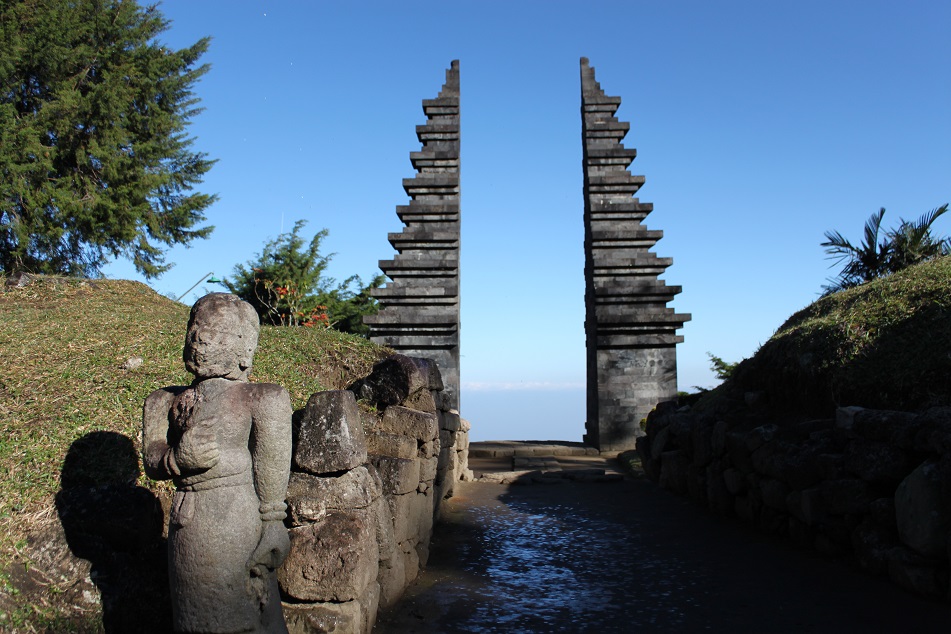
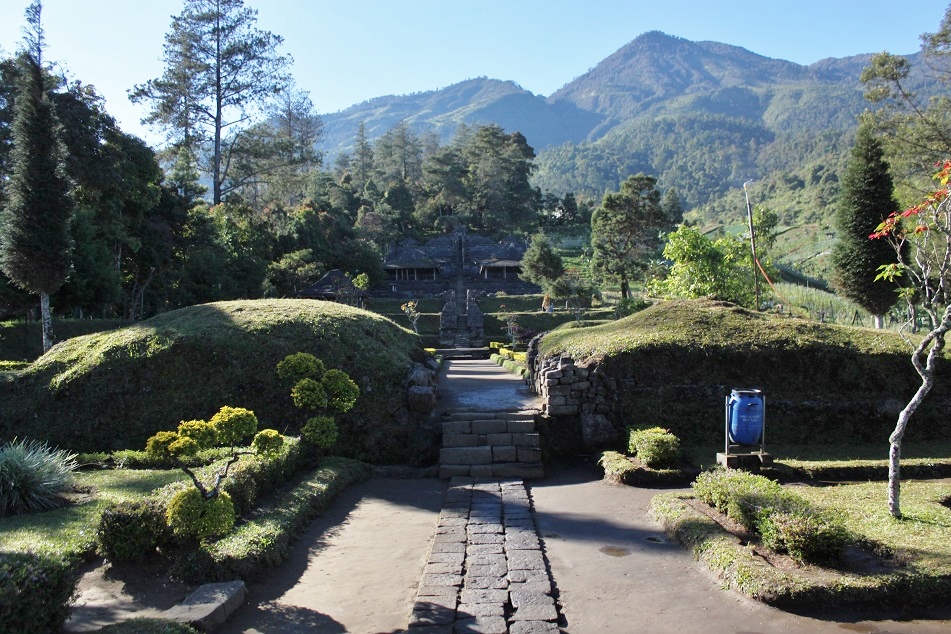
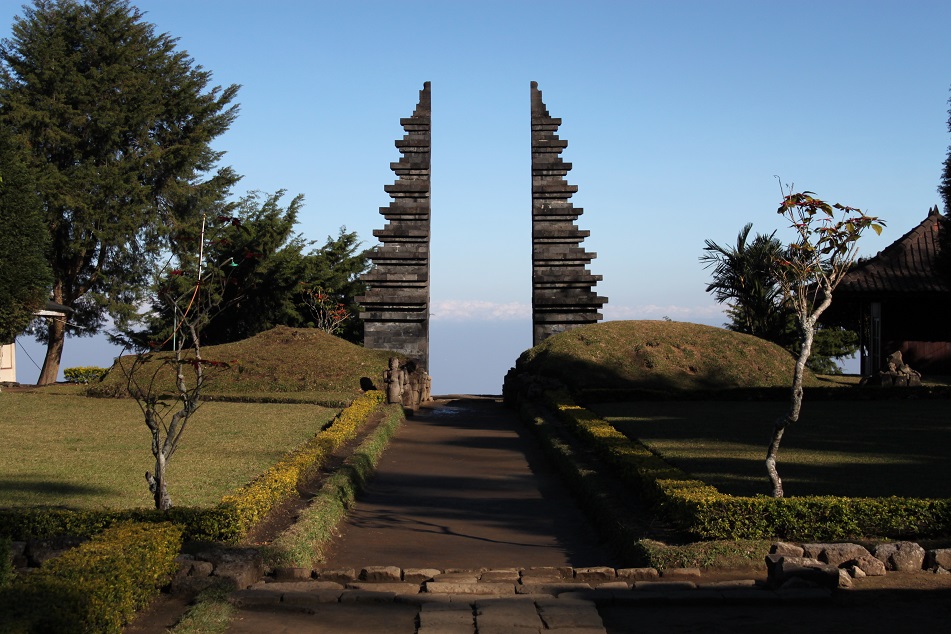
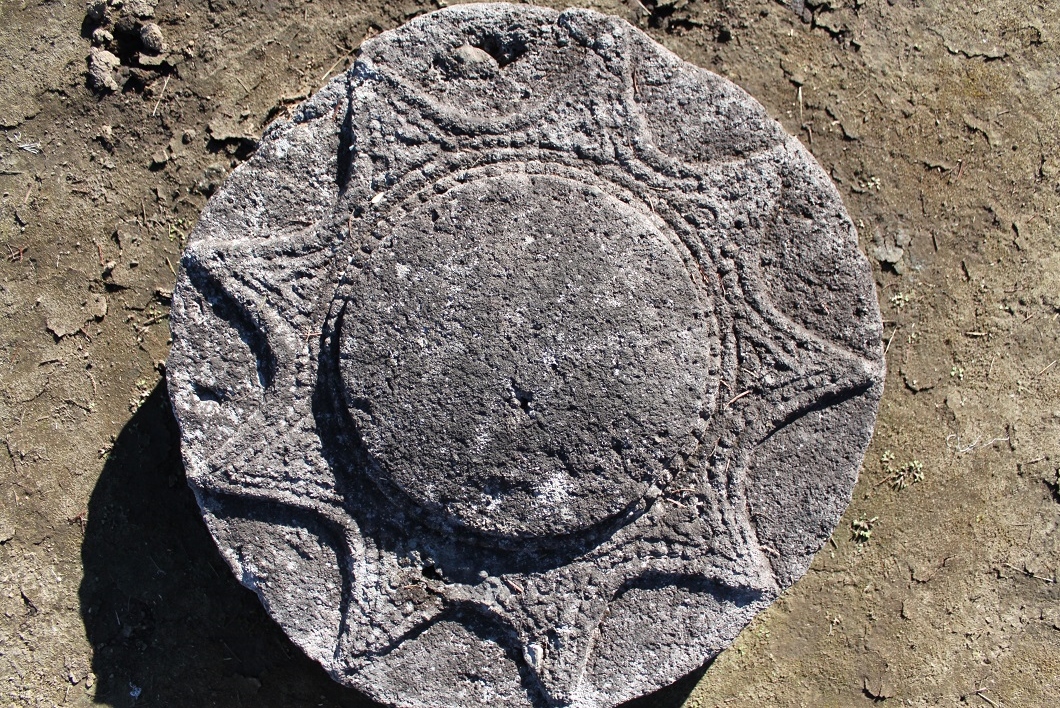
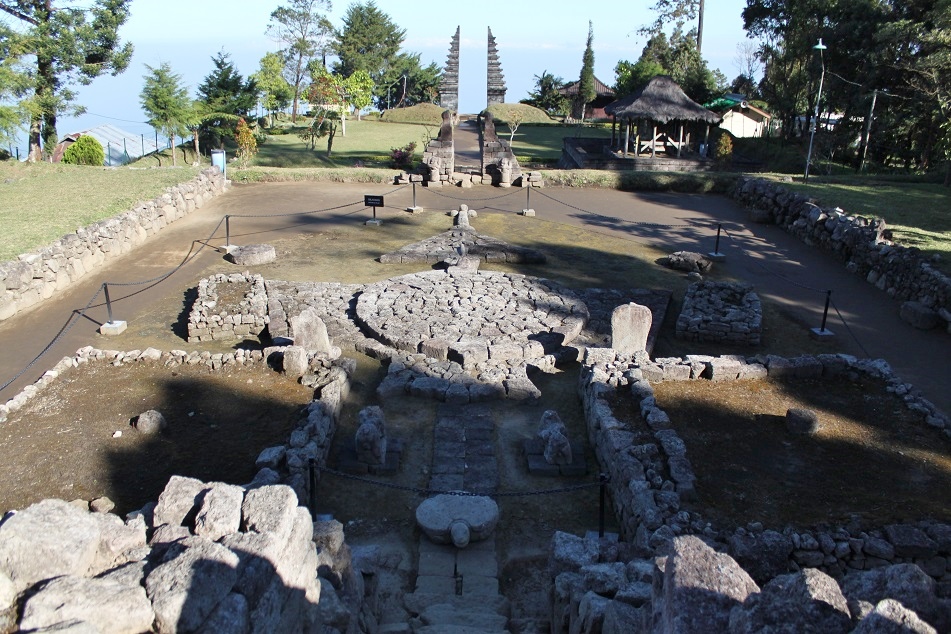

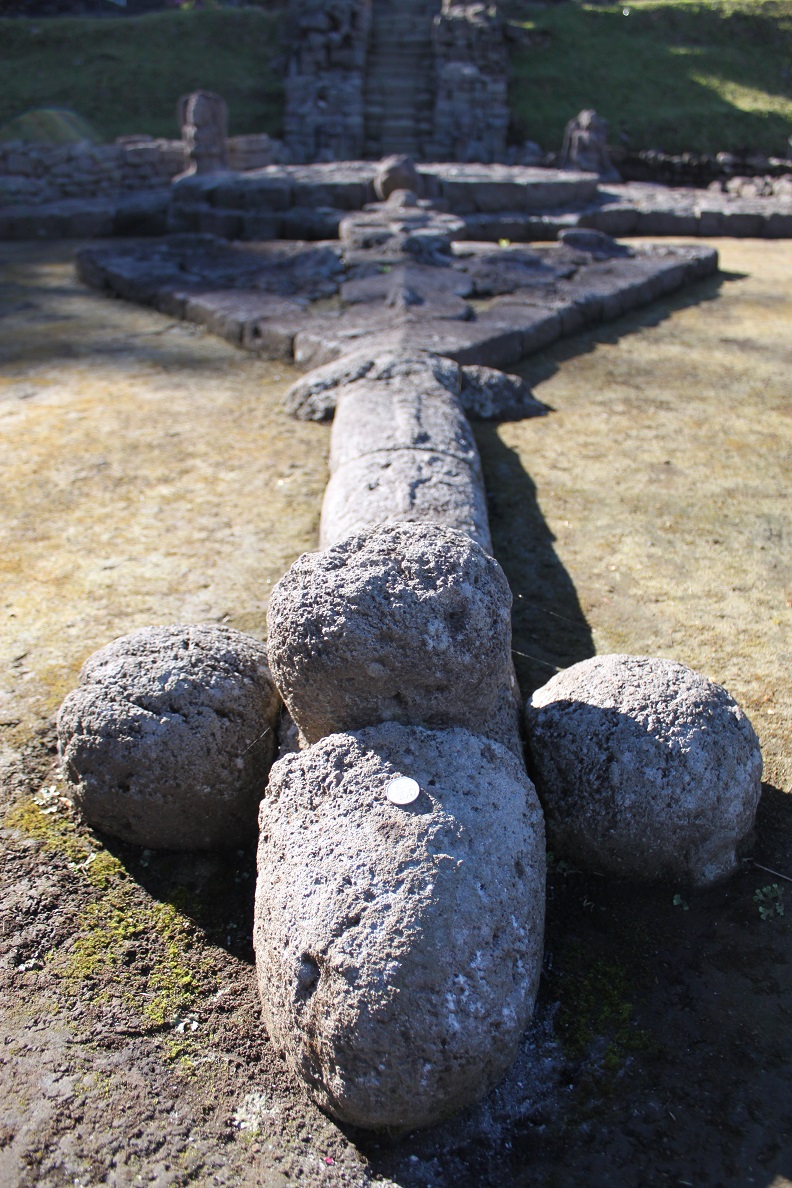
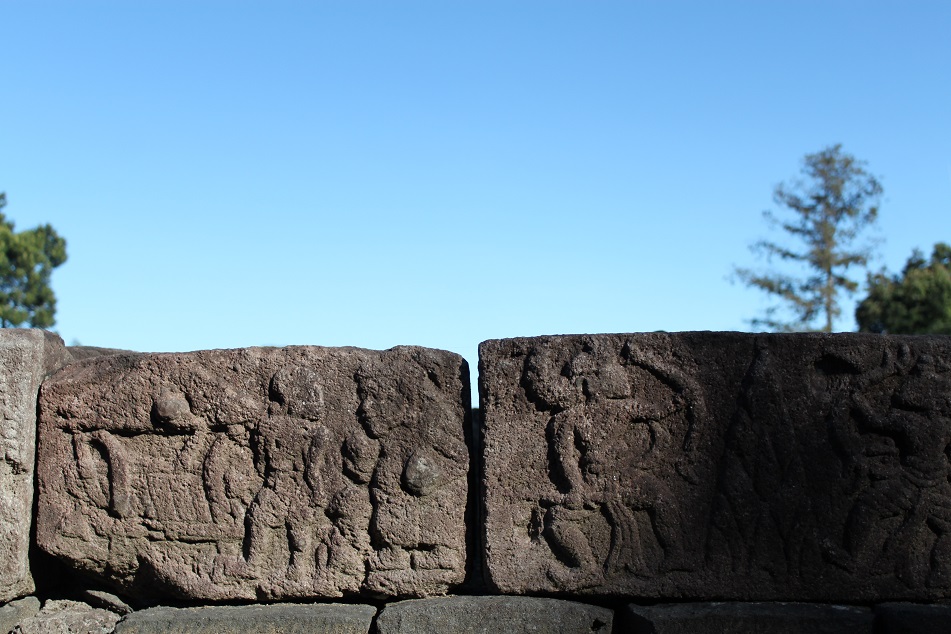
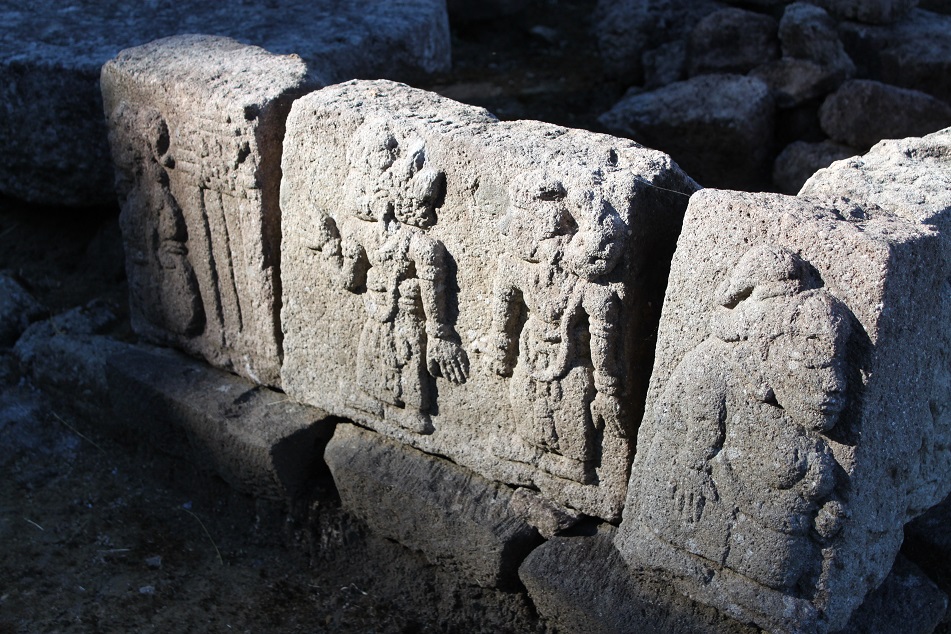
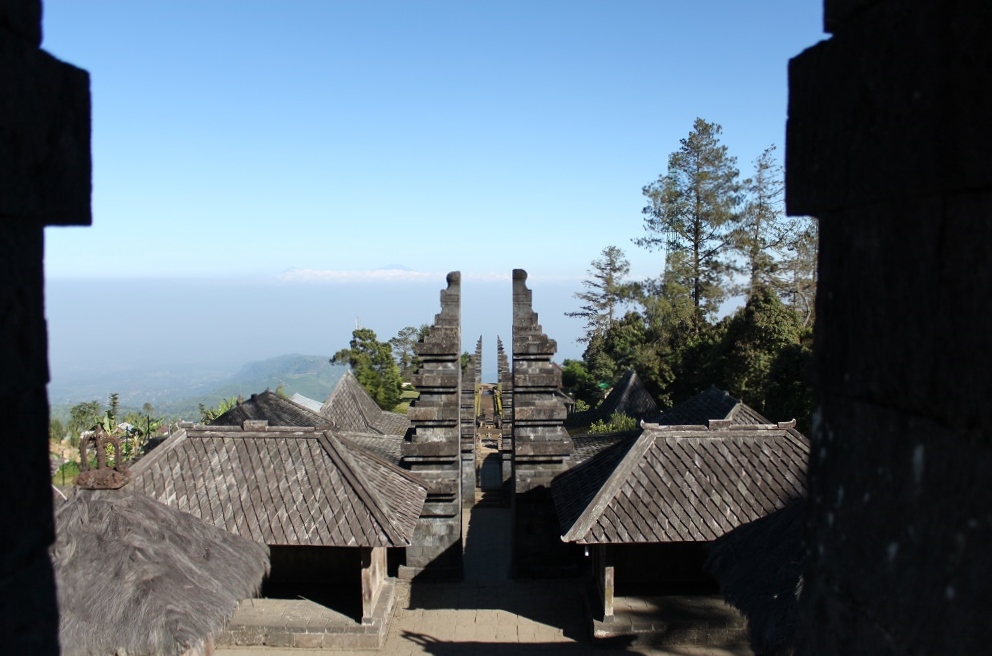
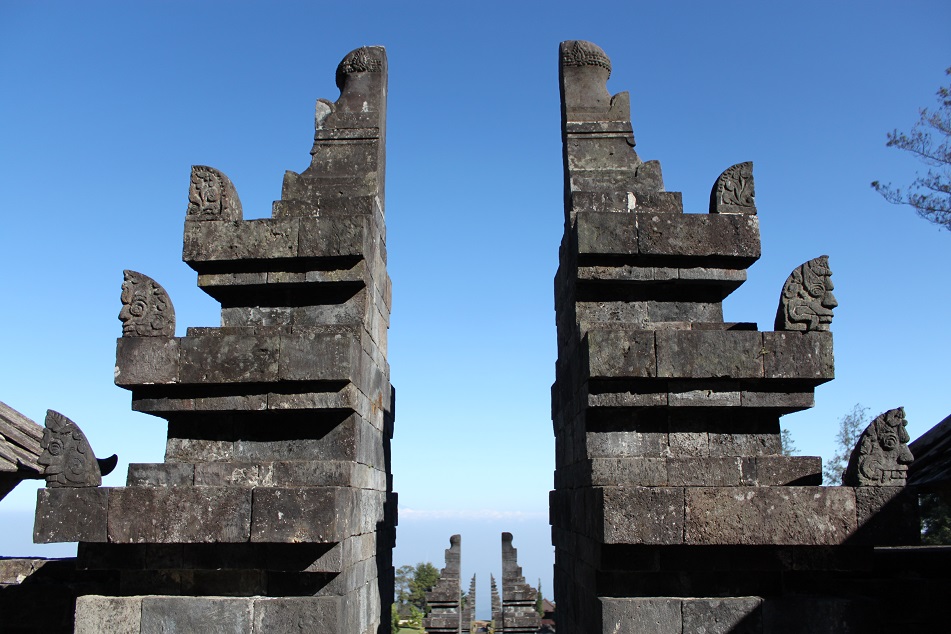
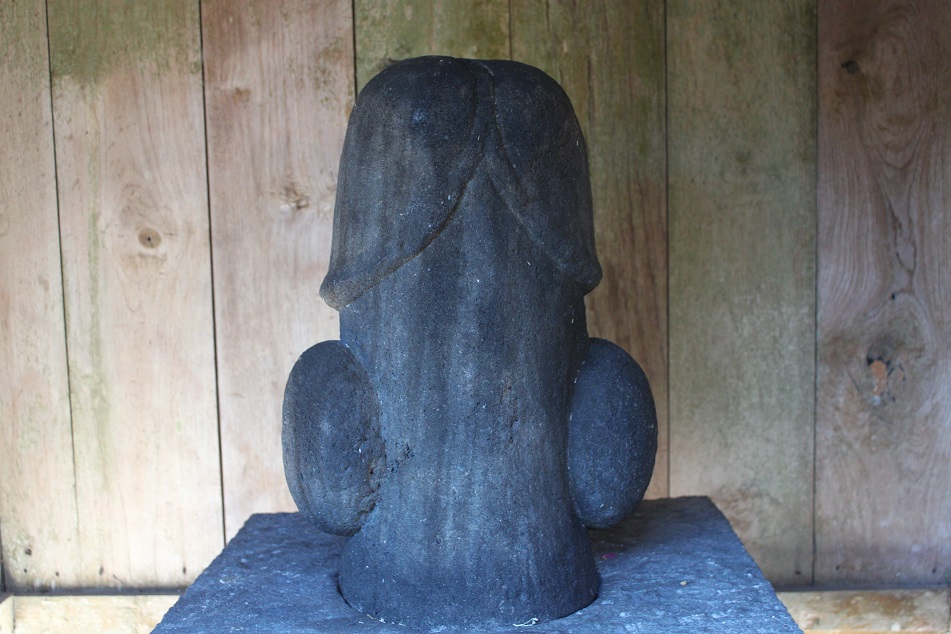
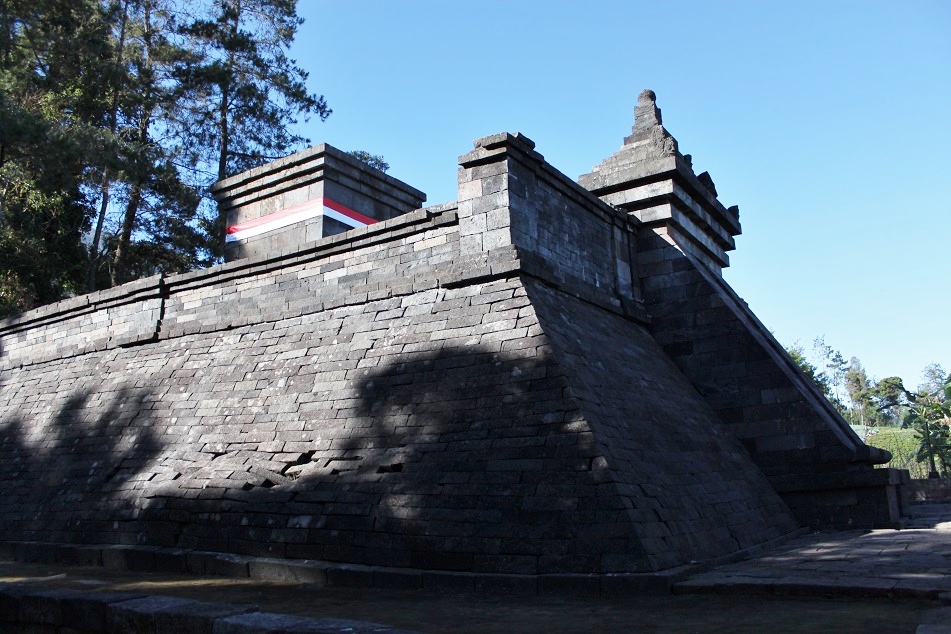
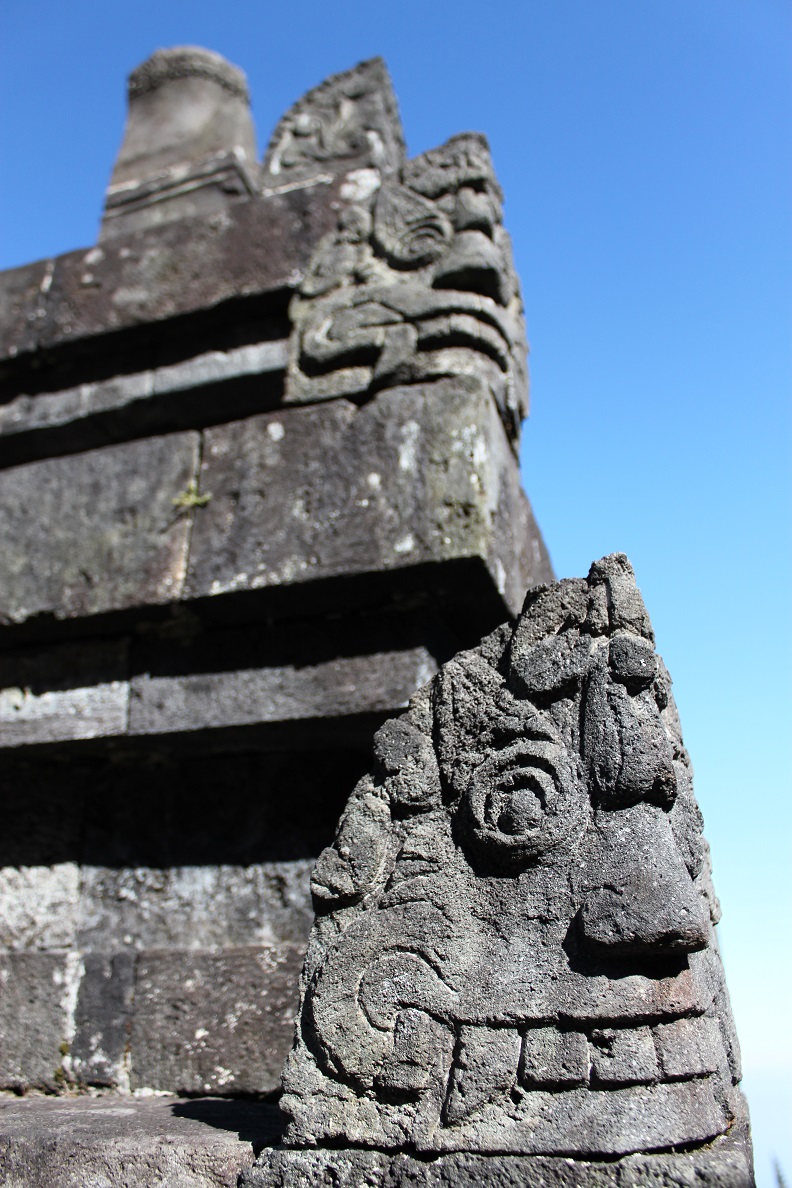

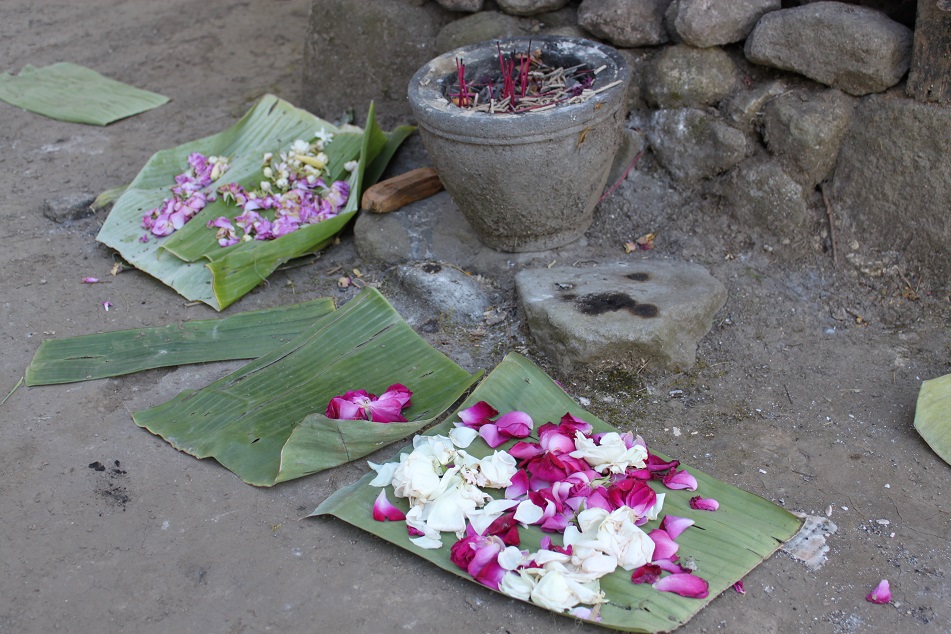

Absolutely fascinating. Thank you.
LikeLike
Thank you for reading, Miriam. Candi Cetho is not the largest or the finest ancient temple in Java, but it truly is one of the most fascinating.
LikeLiked by 1 person
It does look it!
LikeLike
Envy banget liat sepinya…. wakyu saya kesana hmmm…. bisa dibilang itu Candi Cetho berubah jadi kebon orang. Ndak ada bagus2nya sama sekali. Salah saya siii pas Lebaran hahaha…. apalagi ya ada orang foto2 levitase at the most sacred di atas dan asli pake lompat2 berkali2 *aslipasangmukacemberutjutekpengennyelepet
Btw, baru tau ada candi kethek di belakangnya… mungkin krn mood dah berantakan jd pengen cepet pulang saat itu….
LikeLike
Itu orang loncat-loncat bener-bener di atas bangunan candi paling atas itu mbak? Astaga, loncat ya loncat, seneng2 ya seneng2, tapi kok ya gak tau tempat ya. Saya pas nyampe Candi Cetho masih kepagian sih mbak, dan loketnya pun belum buka. Jadi saya langsung masuk, keliling2, foto2, terus ke Candi Kethek. Pas mau pulang baru keliatan petugas di loket, baru bayar deh.
LikeLiked by 1 person
Beneran lompat2, ga sekali aja berkali-kali dan mereka brrombongan sekitar 6orang gitu. Coba itung aja kalo 50kg/org berapa tekanan yg diterima candi kuno itu, apalagi terlihat kan ada bagian yang melengkung? Dan gemesnya, ada yg mau ibadah juga kan? Masalahnya ga hanya rombongan mereka saja, yang lain juga begitu. Ampuuun rasanya….
LikeLike
Kalo gak salah waktu Mbak Riyanti ke Dieng juga banyak pengunjung yang naik-naik ke atas candi ya? Indonesia kaya akan warisan sejarah dan budaya, tapi sama sebagian orang-orang kita sendiri gak dihargai. 😦
LikeLiked by 1 person
Senang dan indah. I’ll have to add this temple to my list for when I do a road trip on Java.. hopefully sometime next year. Makasih untuk semua, Bama!
LikeLike
Makasih for reading, Amit. Java is great to explore in the dry season, although this year there seems to be no dry season at all. It’s been raining here in Jakarta. When you do visit Candi Cetho, also visit Candi Sukuh which is also located on the slopes of Mount Lawu: https://harindabama.com/2012/03/29/candi-sukuh-the-naked-temple/
LikeLike
Amazing place Bama. And beautiful photos.
Alison
LikeLike
Thanks Alison. It’s always good to come early in the morning.
LikeLiked by 1 person
The gates are astounding Bama. Extraordinary photos as always.
LikeLike
Thank you, Sue. I couldn’t have asked for a better weather when I went there. As for the gates, you’ll find plenty of that kind of gate in Bali, should you cycle your way down to the island one day.
LikeLiked by 1 person
Hopefully one day Bama. 🙂
LikeLike
Reblogged this on milamoki and commented:
Love the perspective, history, and beauty this blog shares🙌🙌🙌💜
LikeLike
Thanks for the reblog and for your kind words!
LikeLike
Kayaknya aku harus balik lagi ke Candi Cetho ini sekali lagi. Soalnya pas kemarin kesana udah senja dan kabutnya tebal, jadi gak bisa lihat pemandangan sebagus ini. Plus suasananya jadi agak-agak menyeramkan. Terus gak sempat ke Candi Kethek juga, soalnya ya udah gelap. Lihat jalanan ke Candi Kethek, jadi kangen trekking deh hehehe …
LikeLike
Kalo ke sana mendingan pagi-pagi banget Bart, biar belum terlalu rame. Oiya, ke Candi Kethek ini tinggal ikutin jalan setapak aja ya, soalnya petunjuk arahnya kadang kurang jelas menurutku. Aku kangen alam, banget! Udah delapan bulan gak hiking atau trekking nih.
LikeLiked by 1 person
Iya, selain itu juga selalu bagus khan motret candi-candi di pagi hari. Lebih berdimensi. Kalau sore juga bisa bagus, cuma kadang cuaca sore lebih gak bisa ditebak, apalagi di pegunungan kaya Candi Cetho ini.
Sama Bam, aku pun kangen alam. Kita kemping yuk. Glamping aja yang nyantai atau trekking di Bogor 😉
LikeLike
Iya, pergi pagi-pagi banget biasanya jadi pilihan terbaik buat mengeksplor suatu tempat sih. Glamping itu apa Bart? Kita camping di Everest Base Camp yuk! 😀
LikeLiked by 1 person
Glamping = glamour camping. Alias camping gak pake ribet, semua udah disediain sama operatornya.
EBC? Mau bangeeeet. Beneran! 😉
LikeLike
mau dong galmpingan di EBC juga. hihiiyy!
LikeLike
Tadinya tuh ya aku mikir glamping itu ada hubungannya sama kecantikan gitu, mungkin gara-gara Go-Glam, hehe.. Ternyata eh ternyata… Tapi kalo udah sampe EBC sih udah bukan glamping Kak, tapi gelimpang karena capek. 🙂
LikeLike
gelimpang glamping kalo gitu judulnyaaa… :))))
LikeLike
What I found most interesting is the idea that people look back to their religious roots when their societies are under pressure … I wonder how many places we could look at today and realize that this is going on? As an aside, I love the look of the sloped terraces!
LikeLike
Here are a few examples that I read about this:
1. Under the Soviet Union, religions were repressed. But the rise of nationalism in the final days of USSR also made people eager to learn about their roots. In Central Asian republics they looked into their nomadic cultures with influences from Islamic traditions
2. In the US some African Americans, long cut off from their African cultural roots, are now learning about their heritage and conserving it
3. In Indonesia the spread of radical thinking through the Internet has spurred the reintroduction of cultural aspects from the time when Islam began to absorb many Hindu cultures in the 16th century
I believe understanding this allows us to nurture better societies where people are encouraged not only to integrate without having to conform to one mainstream culture only, but also to contribute to their societies.
LikeLiked by 1 person
Likewise, studies have shown that linguistic diversity is actually stabilizing, not the opposite. People fear the “other” but maybe someday we will all figure out that repression and forced sameness is not the answer!
LikeLike
We all do mistakes, but we also learn. The world is much better and more beautiful when it’s colorful anyway.
LikeLiked by 1 person
Sepertinya ada patung yang aneh. Seperti bentuk… ah forget it hahaha
LikeLike
Yang bentuk phallus itu ya? Memang di masyarakat penganut Hindu, terutama aliran Saiwa, phallus atau lebih dikenal sebagai lingga merupakan simbol dari Siwa. Cuma ya karena sekarang di Jawa mayoritasnya bukan Hindu lagi sehingga ketika melihat simbol tersebut seringkali langsung diasosiasikan dengan alat kelamin pria.
LikeLike
I love how you encorporate the history of the blog. Its very interesting to this history buff.
LikeLike
History of a place is often overlooked by visitors while it actually can provide us all with a better understanding of why and how things happened. Thanks for reading!
LikeLike
Although Candi Sukuh was closed for renovations, I’m glad we still made the trip to Mount Lawu to see its Hindu temples. I did wonder when those split gates at Candi Cetho were built – most looked more recent and a bit contrived. Thankfully that didn’t take away from the overall feel of the compound. Candi Kethek was such a mysterious place, and it was interesting to see floral offerings still being left on its terraces. Thanks for another wonderful romp through history, Bama!
LikeLike
I’m glad we went early in the morning as we could explore the entire temple compound peacefully. But going there was quite a challenge, especially for having to drive up that steep road to reach the temple. I only found out about Candi Kethek a few days before we went, and it turned out to be bigger than I thought. Its mystery made this hidden temple even more intriguing. Thanks for reading, James!
LikeLike
Wow, you covered the complete history of Candi cetho with amazing clicks!!
Its amazing, keep writing…
LikeLike
Glad you enjoyed the photos. It was a quiet morning with clear skies, a perfect day to explore this intriguing temple compound.
LikeLike
The gate is very interesting ! The penis sculpture.. very weird 😀
LikeLike
In the ancient time, especially when Java was still predominantly Hindu, penis or lingam was used by Shaivites as a symbol of Shiva himself. I wonder what you’d think of the photos of Candi Sukuh, another ancient Hindu temple located on the slopes of Mount Lawu: https://harindabama.com/2012/03/29/candi-sukuh-the-naked-temple/
There were some ‘provocative’ statues in modern standard.
LikeLiked by 1 person
Oh thanks for the explanation. I’ve seen a giant penis sculpture in Taiwan as well and we were wondering what was the signification of it.
Thanks for the link, I like when you suggest me some reading 🙂
LikeLike
You’re very welcome. As far as I know penis sculptures and paintings can also be seen in Korea and Bhutan. Human creation must have had inspired some ancient societies.
LikeLiked by 1 person
Candik banget ya candinya. Jadi membayangkan di zaman dahulu tempat ini menjadi apa. Sudah lama ngggak ke Solo, dan jadi pengen eksplor titik-titik ini..
LikeLike
Candinya sendiri sih ukurannya gak terlalu besar dan pahatan reliefnya gak sehalus dan sedetail candi-candi di Dataran Kedu maupun Kewu. Tapi lokasinya yang di lereng gunung dan layout kompleks percandiannya yang berteras-teras bikin Candi Cetho ini cantik. Ayo kak disempatkan, kalau ke Candi Cetho sekalian ke Candi Sukuh sekalian.
LikeLike
udah lama nih nggak ke solo…
LikeLike
Ini karena baru balik melihat Mayan Ruins, ngebaca post-mu jadi mikir, kebanyakan peninggalan candi seperti ini berlokasi di daerah yang berbukit ya. Di pemahaman ancient Mayan, yang tinggal di bukit memang biasanya yg berstatus tinggi di masyarakat. Aku kurang ngeh apakah di Indonesia juga seperti itu pemahamannya.
LikeLike
Sepemahamanku sih alasan kenapa Candi Cetho dan Candi Sukuh dibangun di lereng gunung karena pada masa itu masyarakat Hindu di Jawa sudah semakin terdesak oleh kerajaan-kerajaan Islam yang telah menguasai pesisir Jawa. Sehingga masyarakat Hindu pada waktu itu ada yang memilih mengungsi ke Bali, ada juga yang tetap tinggal di Jawa tapi memilih lokasi di pegunungan atau di tengah hutan karena dianggap relatif aman. Mungkin ada penjelasan yang lebih detail mengenai ini. I have to look it up!
LikeLike
What’s with the penis?
LikeLike
The penis/phallus is a symbol of fertility and human creation in several religions in the world, including in Shaivism (a sect in Hinduism).
LikeLike
Beautiful! Your knowledge of these temples is so vast! Is that a coin in the foreground on the “symbol of human creation” photo?
LikeLike
Thanks Kelly. I double-checked some information when I was writing this post, just to make sure I didn’t mix things up. It is indeed a coin. Some people seem to like throwing coins to phallic symbols, including the one at Candi Sukuh: https://harindabama.com/2012/03/29/candi-sukuh-the-naked-temple/
Maybe for luck?
LikeLiked by 1 person
How interesting! Great photos!
LikeLike
Thank you for reading and leaving such a kind comment, Desiree. Glad you enjoyed this post!
LikeLike
Fascinating!
I’m loving the history of Java!
LikeLike
Thank you for reading and for tweeting this post, Victoria. Much appreciated!
That means you shouldn’t miss Java when you go to Indonesia one day.
LikeLiked by 1 person
Reblogged this on ikayulianipratiwi.
LikeLike
Foto-fotonya menggugah, menggugah supaya saya ke sana hahaha. Dulu sekali naik ke Gunung Lawu, tapi tidak sempat ke Candi Cetho karena keterbatasan waktu dan bukan jalur pendakiannya…
LikeLike
Makasih Rifqy. Kayaknya memang lebih seru ke sininya mendaki sih, tapi apa daya waktu terbatas, mobil pun jadi pilihan. Kalo ke Candi Cetho jangan lupa ke Candi Kethek juga ya.
LikeLike
Mungkin perlu mendaki lewat jalur Candi Cetho, katanya lebih indah hehe. Siap Mas:)
LikeLike
Quite an intriguing post!! Stunning pictures, I looked at every single picture twice 🙂
LikeLike
Much appreciated! Goa was such an atmospheric place, and I’m glad you enjoyed the photos.
LikeLike